Solutions
People: A, B, C, D, E, F, G and I.
Localities: Model Town, Dwarka, Hauz Khas, Shastri Nagar, Lajpat Nagar, Saket, Inderlok and Kirti Nagar.
Companies: Ponds, Lotus, Himalaya, Dove, Nivea and Lakme.
Considering the information provided in the question:
1) E and I work at the same company but are from different localities. G lives at Saket and works at the same company as C .
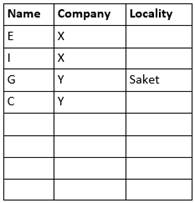
2) There is only one person who works at Dove who lives at Inderlok.
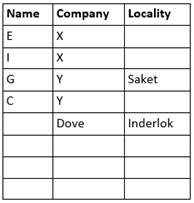
3) B lives at Lajpat Nagar and is the only person who works at Lakme. The one who lives at Dwarka doesn’t work at Himalaya, Ponds and Lotus. Also, this person doesn’t work at Dove or Lakme.
(So, he/she works at Nivea. Also, it is given that there is only one person working at Himalaya and Nivea. Hence this person can’t be E/ I/ C)
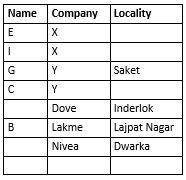
4) Since only one person works at Himalaya, Nivea, Dove and Lakme.
(So, X/Y is Ponds/Lotus or vice versa)
5) The guy who lives at Hauz Khas doesn’t work at Himalaya or Lotus. He also doesn’t work at Dove, Lakme and Nivea.
(So, clearly, he is C and works at Ponds. Thus, X is Lotus)
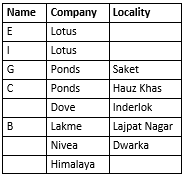
6) The people from Kirti Nagar and Shastri Nagar work at the same company.
7) A lives at Model Town while D lives at Dwarka.
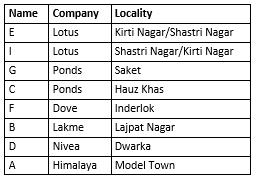
Clearly, the place where E and I live is not clear. So, the information is insufficient to answer the question.



 Get latest Exam Updates
Get latest Exam Updates 





 ×
×






